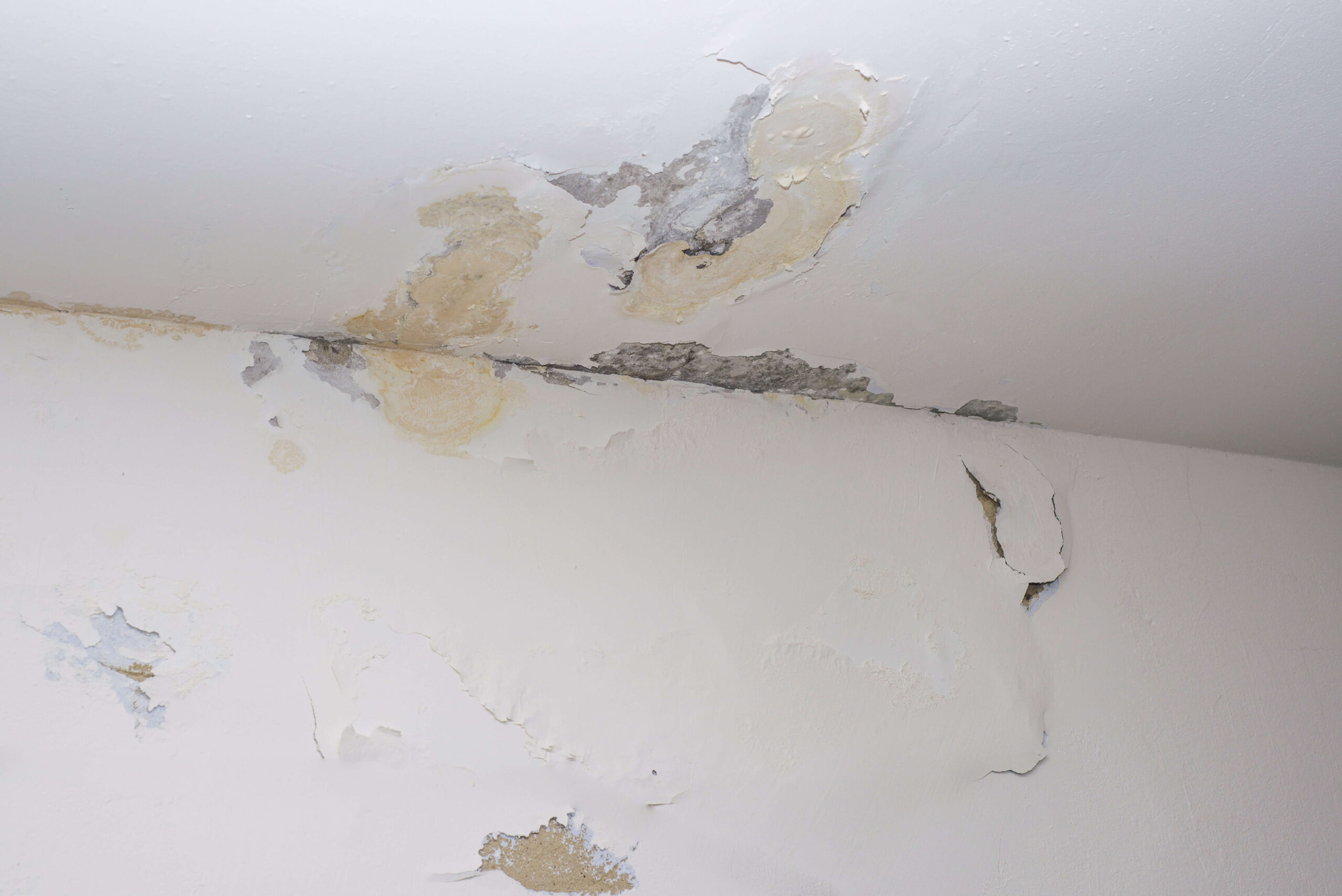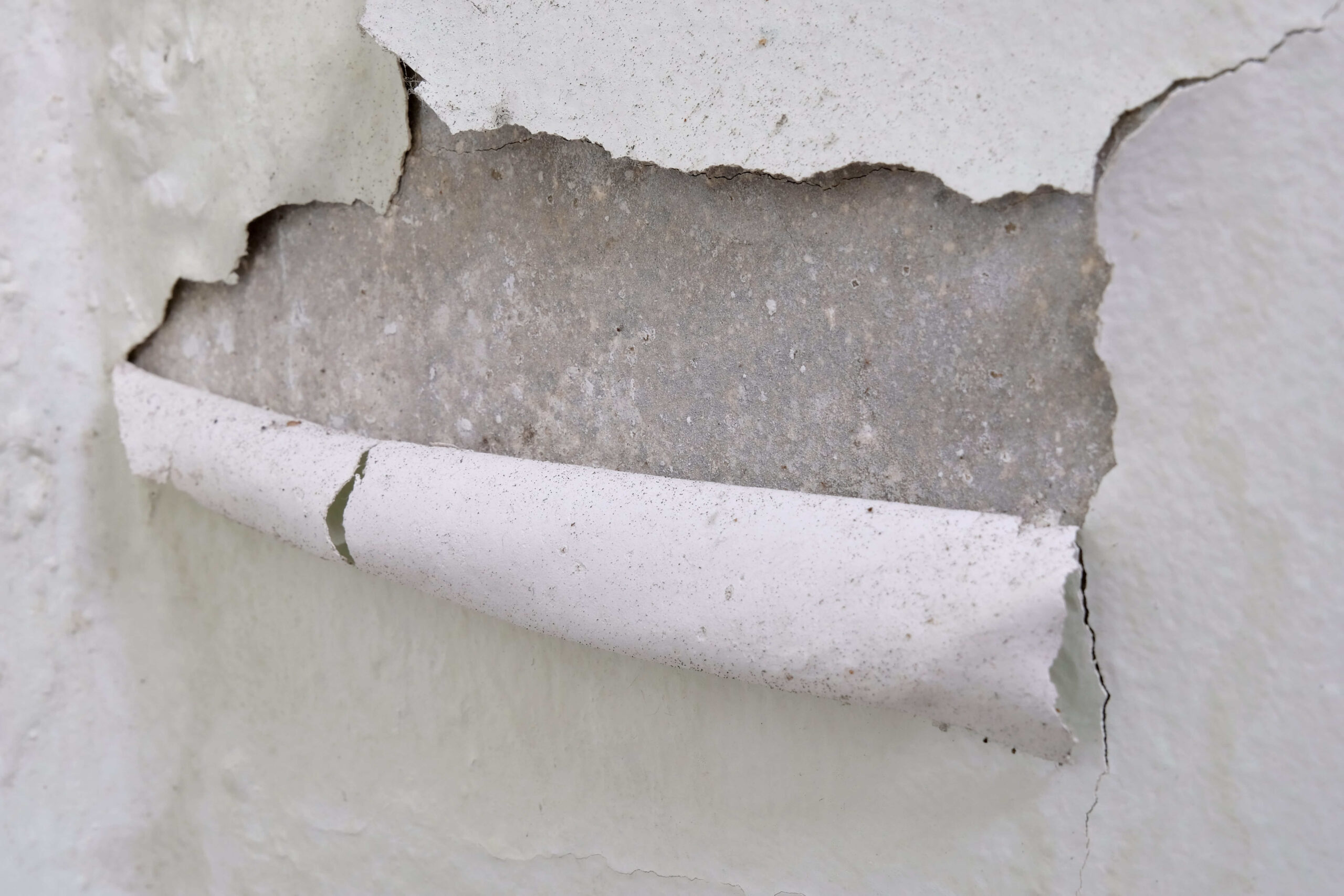PENETRATING DAMP
ARE YOU CONCERNED THAT YOUR PROPERTY HAS PENETRATING DAMP?
Penetrative damp is simply rain water that seeps through the cracks in a building’s foundation, and it can impact both the structure of the building as well as the health of its occupants. This problem is most common in buildings that are exposed to excessive amounts of rainfall or in older buildings with blocked gutters or porous bricks and roofs with cracks.
Rain penetration, or penetrative damp as it’s also known, is caused by the movement of moisture, in a horizontal direction. Or by rain water seeping through the walls randomly. It can affect cavity walls or badly installed wall-ties, internal walls and buildings constructed with solid walls.
Penetrative damp is most commonly caused by the presence of porous bricks that allow water to permeate through the walls, or by defective buildings.



SIGNS THAT YOUR HOUSE HAS PENETRATIVE DAMP:
- EDamp patches on internal walls that won’t go away, even after you’ve dried them
- EThe paint / plaster on your walls are deteriorating
- EYou see blisters, stains or salt deposits on the wall
- EThe timber in your house is starting to rot or decay
- EYour window frames / skirting boards rotting Mould growing on your internal decorations. You can smell dampness or mould in your house. Moss is growing on the external walls of your house
You can spot penetrative damp by watermarks or moist patches near windows or doors, at any height. The moisture detector will usually have high readings when it’s raining, but low readings when it’s dry. Don’t wait to fix the problem — call London Damp Surveys at 0207 305 5997 and get your survey booked in today!
THE CAUSES OF PENETRATING DAMP
Penetrating damp is often caused by blocked downpipes/gutters, or blown rendering. It is common for rainwater to penetrate the wall horizontally, causing penetrating damp. You must also check for damage, decay or cracks in window frames and roofs.
You must be protect external basement and retaining walls from moisture intrusion by using tanking treatments. Interior walls can be protected by a chemical damp-proof course and waterproof renders. If there are building defects, such as faulty windows or roofs, they must be rectified by proficient and professional builders.
TREATING PENETRATIVE DAMP
With recent advancements, penetrative damp treatment is even more sophisticated. If your internal walls suffer from poorly constructed cavity walls and installation of wall ties, you can use a damp proof render to fix the problem.
External walls often need to be treated with water-resistant paints and coatings, along with water repellent creams and fabrics. Clogged gutters and downpipes must occasionally be cleaned out, while cracked roof tiles should always repaired swiftly.
Colourless water repellents can be good as they are breathable and allow moisture to escape through them, rather than blocking it. Window sills and other areas where water is stored must be cleaned of dirt, leaves and moss growth regularly.
Cement tanking systems can be employed to effectively treat damp issues caused by high external ground levels.
Penetrating damp treatments could be:
- NRemoving plaster
- NTanking Slurry
- NWater-proof render
- NSalt neutraliser
- NApplication of skim coat plaster
- NApplication of an external render
- NUsing a clear waterproof sealer on the exterior walls
- There can be health implications associated with damp such as those caused by mould and dust mites, which can trigger allergies or aggravate pre-existing medical conditions.
PENETRATING DAMP CAN BE A SERIOUS PROBLEM IF LEFT
Thousands of homeowners have used London Damp Surveys. If you need a professional damp survey, book it today using our online form or by calling us directly on 0207 305 5997.
frequently asked questions
Can penetrating damp affect both internal and external walls?
Yes, penetrating damp can affect both internal and external walls. It occurs when water penetrates through the walls due to issues like faulty guttering or roofing, cracks in the wall, or poor pointing.
How can I identify the source of penetrating damp in my property?
Identifying the source of penetrating damp involves checking for signs such as damp patches on walls or ceilings, a musty smell, or damaged plaster. The source could be a leaky roof, faulty gutters, cracks in walls, or other structural defects that allow water to penetrate.
Can penetrating damp cause damage to plaster, paint, or wallpaper?
Yes, penetrating damp can cause significant damage to plaster, paint, and wallpaper. It can lead to discolouration, peeling paint or wallpaper, and damage to plasterwork.
Can external factors, such as faulty gutters or roof leaks, contribute to penetrating damp?
Absolutely, external factors like faulty gutters, roof leaks, or even cracks in external walls can contribute significantly to penetrating damp.
What are the effects of penetrating damp on electrical systems within a building?
Penetrating damp can potentially cause severe damage to electrical systems within a building. It can lead to short circuits, malfunctioning appliances, and in extreme cases, electrical fires.
How can I ensure proper ventilation to prevent or minimise penetrating damp?
Ensuring adequate ventilation, especially in areas prone to high moisture levels such as kitchens and bathrooms, can help prevent penetrating damp. This can be achieved by installing extractor fans, regularly opening windows, and using dehumidifiers if necessary.
Is it necessary to conduct regular inspections to detect and address potential penetrating damp issues?
Yes, regular inspections are crucial in detecting and addressing potential penetrating damp issues early. This includes checking for signs of dampness, inspecting the roof and gutters, and ensuring the property’s drainage system is functioning correctly.
How can I maintain proper drainage around my property to prevent penetrating damp?
Maintaining proper drainage involves ensuring gutters and downpipes are clear of debris, fixing any leaks promptly, and making sure the ground slopes away from your property to prevent water from pooling against walls.
Can penetrating damp cause health issues?
Yes, prolonged exposure to penetrating damp can cause health issues, particularly respiratory problems. The damp conditions can promote mould growth, which releases spores into the air that can exacerbate allergies and asthma.
Does penetrating damp cause mould? What is damp mould?
Yes, penetrating damp can lead to the growth of damp mould. Damp mould is a type of fungus that thrives in moist conditions and can appear as a black, green, or white substance on walls, ceilings, or furniture. It can cause a musty smell and lead to a range of health issues.
HOW CAN I GET HELP?
To get help, call London Damp Surveys on 0207 305 5997.
Or, feel free to send an enquiry or book a survey online.
If you submit an enquiry form, one of our damp surveyors will be in touch with you to discuss your problems. We aim to contact you within 24 hours.
- Damp can cause structural problems such as rot and corrosion that could ultimately cost you money in the long run if not treated properly.
